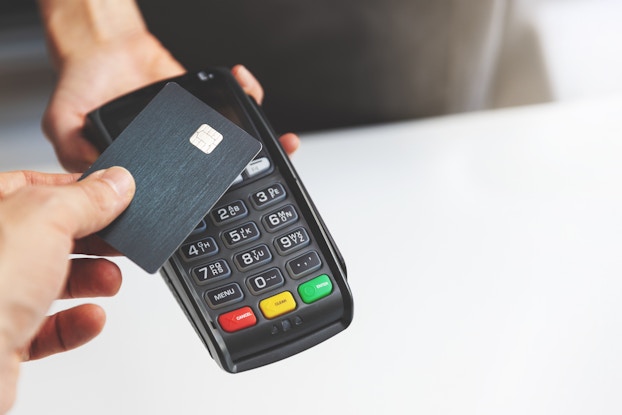
Mastercard announced that it’s getting rid of magnetic stripes for all of its cards, except for prepaid cards, like gift cards. The company plans to phase out magnetic stripes on newly issued credit and debit cards over the next 10 years. Other credit card companies may follow and discontinue magnetic stripes, as well.
[Read more: How to Collect Payments: A Guide to Every Form of Payment]
Why is Mastercard making the switch?
Although Mastercard is the first payment company to phase out magnetic stripes, the announcement is unsurprising in many ways. In the past, magnetic stripes included all the information a card reader needed to confirm and facilitate an electronic transaction.


However, magnetic stripes have a big flaw. The information on them is static and unchanging, including the encryption that protects users’ personal information like their cardholder name, address and bank account number.
These cards can easily fall victim to skimming devices. In comparison, chip cards utilize EMV chip technology, and they are much more secure because they generate temporary authentication codes for each digital transaction. That makes it much harder for hackers to lift consumers’ information from these cards, even if they have a reading device at a POS terminal.
And while the public is rapidly adopting these cards, many merchants do not yet have card readers with EMV chip technology. Since the U.S. needs to adapt to using EMV chip technology, the optional deadline for magnetic stripes is 2027. The cards will be gone for good by 2033.
[Read more: A Complete Guide to Payment Gateways]
When will the Mastercard change take effect?
Mastercard knows this shift puts pressure on business owners, so the change isn’t happening overnight. Here is the company’s timeline:
- 2024: Magnetic stripes become optional.
- 2029: Mastercard will no longer issue cards with magnetic stripes.
- 2033: Magnetic stripes will be phased out entirely.
This extended timeline gives business owners plenty of time to adjust to the change.
Since the U.S. needs to adapt to using EMV chip technology, the optional deadline for magnetic stripes is 2027. The cards will be gone for good by 2033.
How to prepare for this change
If you’re a business owner with at least one payment terminal, the best preparation step is to order an EMV reader. In fact, you already should have taken steps to include EMV card readers at your store.
As of October 1, 2015, any business with a POS system has to accept EMV payments. Otherwise, you’re liable for fraudulent card use and chargebacks that take place at your store.
Furthermore, EMV chip cards have been widely adopted in the U.S. and around the world. Chip-enabled credit cards are used for 86% of credit card transactions worldwide and 73% of transactions in the U.S.
Many business owners already adopted EMV card readers before Mastercard’s announcement. If your business has not, you can talk to your payment processing service about upgrading your POS terminal and card readers.
However, if you want to prepare your business for what’s next, you need to do more than accept EMV payments — if EMV technology is currently replacing magnetic stripes, contactless payments could replace chip cards in the future.
[Read more: How to Go Cashless Quickly]
Preparing for what’s next
Contactless payments let customers pay by tapping their card or phone near the POS terminal. It uses radio frequency identification (RFID) technology to communicate with the card reader.
Contactless payments have been available in the U.S. for many years but became more widely accepted during the pandemic. And mobile payments are more secure than chip cards because of the biometric component.
When you pay with your mobile phone, you confirm your identity by providing your fingerprint or scanning your face. Mastercard is even working to incorporate a Biometric Card that combines chip technology with the customer’s fingerprint to verify their identity.
The customer either inserts or taps their card at the payment terminal, and the sensor creates a digital image of the thumb. This image is matched against the image stored on the card. Assuming there is a positive match, the transaction is authenticated.
CO— aims to bring you inspiration from leading respected experts. However, before making any business decision, you should consult a professional who can advise you based on your individual situation.
Follow us on Instagram for more expert tips & business owners’ stories.
CO—is committed to helping you start, run and grow your small business. Learn more about the benefits of small business membership in the U.S. Chamber of Commerce, here.







